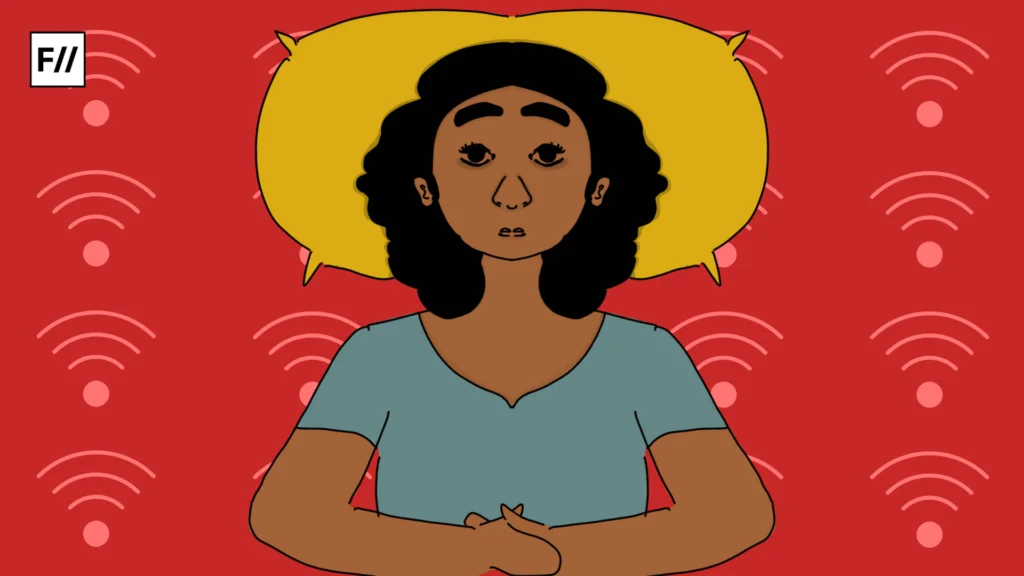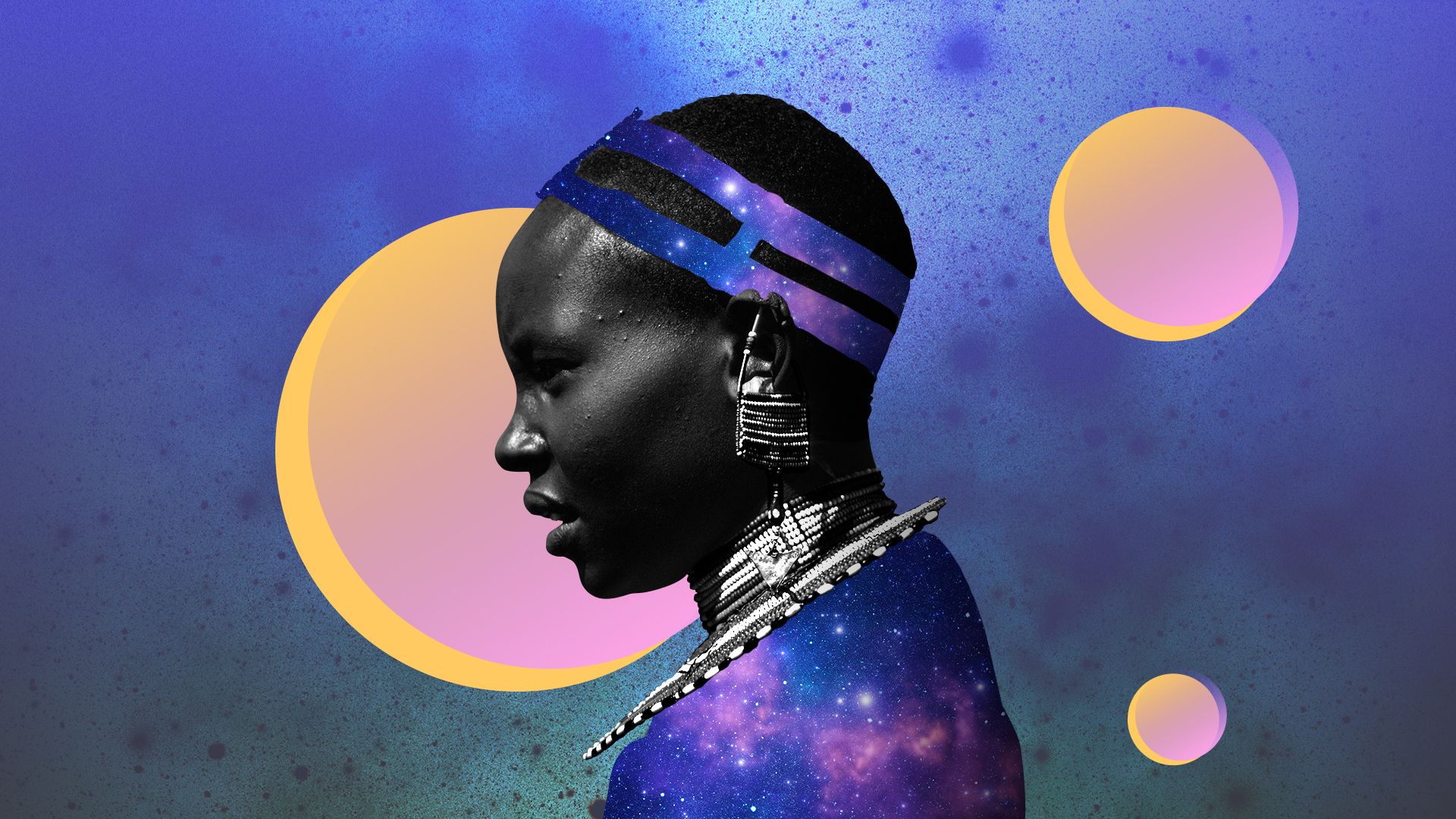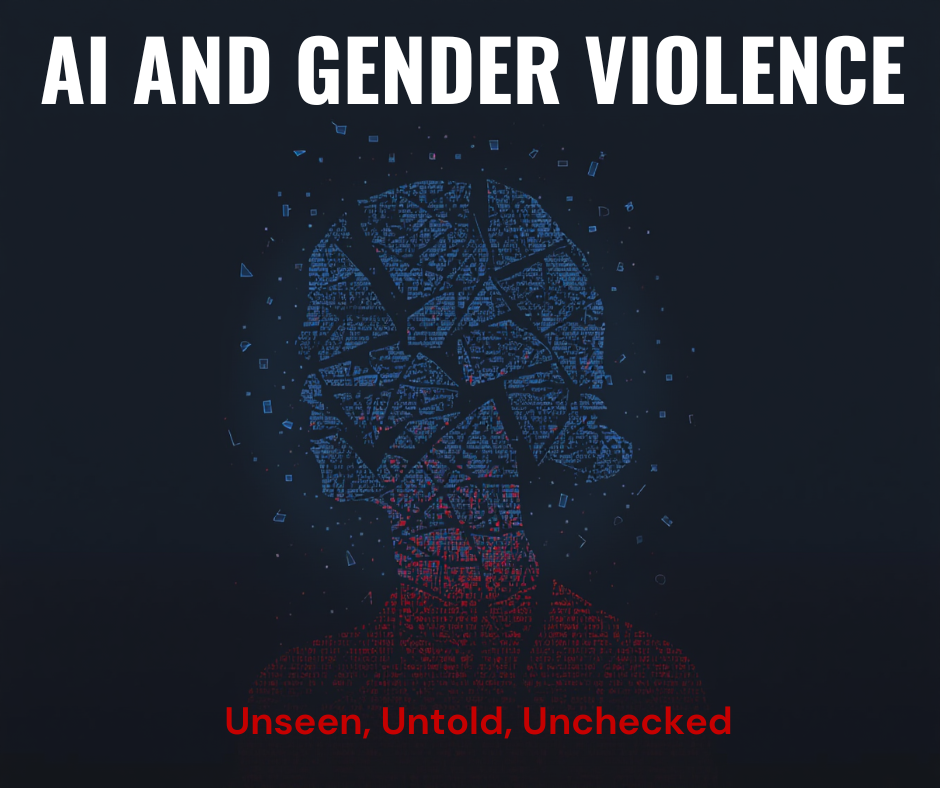In late 2023, India was introduced to Naina Avtr, the country’s first “AI superstar.” A male entrepreneur and digital artist created her. She is photogenic, self-assured, politically neutral, endlessly stylish, and entirely artificial.
Avtr Meta Labs designed Naina Avtr as an AI-generated influencer. She posts lifestyle content, brand collaborations, and commentary that mimics the tone of India’s emerging Gen Z creators. She is marketed as a symbol of India’s technological future, bagging awards like NDTV WhosThat360 AI Creator, Midday Showbiz AI Influencer, and International Iconic AI Influencer in 2024. Yet the glitz and glamour of this virtual phenomenon hide a series of troubling questions about gender, technology, and the commodification of femininity. From Shudu.gram, the world’s first digital supermodel, to Lil Miquela and other CGI influencers, we see the familiar phenomenon of men creating, controlling, and profiting from idealised female bodies. The future, with all its promises, is still not free from patriarchal norms.
Code ≠ Women
Naina is a repackaged version of the age-old male fantasy of an eternally compliant, flawless, and controllable female figure. In her design, patriarchy and its resultant power over women meet capitalism and its exploitation of women’s bodies. bell hooks, in Eating the Other: Desire and Resistance, engages with Hal Foster’s notion of ‘contingent upon instrumentality,’ an idea that sits uneasily with the fabrication of Naina (p.368). Hers is a contingent presence, designed for marketability. ‘Her worth is fastened to the axis of her utility, rather than the essence of her identity. She exists as long as she serves a purpose: to attract, to sell, to perform.‘ (Thulasi Pillai V, Rajeev P, 6) And when that function fades, so will she.

Aisa Kadiri’s concept of ‘denied subjectivity‘ deepens this critique. In colonial and postcolonial contexts, Kadiri argued, subjectivity, the right to be recognised as a self-conscious, thinking, feeling being, is systematically denied to the marginalised. In the digital present, we witness a technological iteration of that same logic. Naina, built solely for visibility and revenue, embodies the automation of denied subjectivity.
Naina’s existence is problematic because she exists in parallel with real women online; women who navigate the complexities of visibility and vulnerability to harassment, ratioing, objectification, and often brutal scrutiny. Naina’s digital presence insulates her from the very violence that structures women’s experiences in online spaces. Her invulnerability isn’t progress. Instead, it wipes out the lived experience of women online.
Naina’s digital presence insulates her from the very violence that structures women’s experiences in online spaces.
It supplants the messy, contested, and inherently political act of female self-expression with a corporate simulation of womanhood. This curated version of femininity masks the deep-rooted inequalities that continue to govern women’s realities. In short, Naina does not challenge the conventions of our society. She reinforces it by delegitimising the lived realities of real women. This demonstrates how technology in the wrong hands can reproduce patriarchal ideals under the guise of innovation.
Naina Avtr and the problem of the gaze: who looks, who is looked at
Laura Mulvey, in her text Visual Pleasure and Narrative Cinema, introduced the concept of male gaze and explained cinema’s role in framing women as objects of visual pleasure within patriarchal structures. Naina Avtr, though not a real woman, is assembled from that very gaze. Her creator, a man, literally owns her image, her body, and her digital persona. Here, authorship becomes ownership. And that ownership exposes a new layer of an old problem: when female identity itself can be Frankensteined and monetised by men, what becomes of women’s agency? AI influencers like Naina amplify this power dynamic. She doesn’t choose her clothes or her brand deals. Each decision is filtered through her creator’s lens, and let’s be honest, that lens still carries a trace of cologne and conditioning.
The technologies that make Naina possible are not neutral. They are built upon datasets drenched in gendered, racialised, and caste-coded biases. So, when a man uses AI tools to create his fantasy of a woman, he’s not merely making a fair-skinned, slim-bodied and hyper-feminine avatar; he’s helping to train the machine gaze itself. Then let’s ask, what is the machine gaze? Machine vision inherits the male gaze, but in an algorithmic form.

If Mulvey’s male gaze was the camera’s complicity with patriarchy, the machine gaze is its algorithmic predecessor. Algorithms learn what to ‘see’ by absorbing human patterns of attention and engagement. In doing so, they replicate the same hierarchies that shaped those patterns in the first place. The result is a feedback loop that favours fair-skinned, urban, slim, and hyper-feminine ideals, while sidelining those that challenge conventional beauty standards or social privileges.
And when such systems that reward only a certain type of female body are used to fabricate an Indian woman, we must pause and ask, whose imagination does she represent? Naina may look like us, but she embodies a fantasy, and not the complexity of our many realities. And this is where the question of representation comes into the spotlight. Naina mirrors and multiplies societal beauty ideals pixel by pixel, until they become digital default settings. Her presence must prod us to question how femininity itself is being re-coded in the age of AI.
Gendered representation & body politics
Representation matters. And even more so in the digital era, where online visualities increasingly shape social norms. Naina’s aesthetics replicate a narrow bandwidth of Indian womanhood- fair-skinned, slim, symmetrical, with Eurocentric features and hyper-feminine styling. This echoes the long history of fairness creams (Fair&Lovely, what is that now? Glow&Lovely?), Bollywood beauty standards, and Instagram filters that have taught us what beauty should look like. What’s new is the level of control over that body: it can be endlessly tweaked, adjusted, and perfected without the inconveniences of real-world diversity or dissent.
Feminist scholars have long argued that the female body is a site of resistance as well as control. But AI avatars remove that tension altogether.
Feminist scholars have long argued that the female body is a site of resistance as well as control. But AI avatars remove that tension altogether. There is no ageing or desiring body behind Naina. As bell hooks argues in Black Looks: Race and Representation, dominant visual culture turns the racialised and gendered body into a spectacle to be looked at, judged, and consumed visually.
Such bodies are reduced to sites of visibility that mask the absence of subjectivity. In this sense, figures like Naina Avtr symbolise what hooks’ work suggests: a spectacle of absence, bodies that are hyper-visible yet fundamentally stripped of agency. She cannot resist, redefine, protest or claim her own representation. She exists solely as an image of perfection, meticulously constructed to be seen and sold.
Intersectional & Indian-specific concerns: the case of Naina Avtr
The creation of Naina Avtr raises important questions that are distinctly rooted in India’s cultural and digital hierarchies. Her appearance and persona are those of the urban, English-speaking, upper-caste elites. Her smooth skin and cosmopolitan styling are detached from the messy diversity of real Indian womanhood. Where, then, is everyone else? The dark-skinned, plus-sized, hijab-wearing, trans, Hijrah or Dalit digital influencers rarely find space in this ecosystem. Their existence complicates the frictionless fantasy that avatars like Naina are built to sell. Thus, the emergence of Naina reinforces who gets to be seen and celebrated in the digital mainstream, and who remains invisible.
This invisibility is not accidental. It is systemic. The Indian tech industry, like much of global AI, is overwhelmingly male, upper-caste, upper-class, and urban. Its creators build in their own image, often unconsciously encoding their biases into the systems they design. So, when a man creates India’s first AI woman, it doesn’t simply mark technological progress; it becomes a mirror reflecting the same old hierarchies of gender, caste, and class that have long structured Indian society.
The claim that AI is the future conveniently conceals the deeper truth, that this future is being imagined, designed, and monetised by a small, privileged demographic.
The future being sold is not a rupture from the past, but a high-resolution continuation of it. The claim that AI is the future conveniently conceals the deeper truth, that this future is being imagined, designed, and monetised by a small, privileged demographic. The myth of neutrality in technology masks the politics of its creation. Women, queer, and marginalised communities are again reduced to representation without participation. They are flattened into consumable symbols, and their complexity edited out for market appeal. Their presence is managed, and their visibility contingent on how well it fits into dominant narratives of desirability and success.
In that sense, Naina Avtr is merely an artefact of power. She is a projection of who India’s technological elite believes a woman should be, and who they imagine the future is for.
Afrofuturism, abolition, and the need to reimagine
To reshape Naina, we must centralise Afrofuturism and abolitionist feminism, movements that reimagine technology not as a tool of control, but as one of liberation.
Afrofuturism, according to Gipson, ‘is an intersection of imagination, technology, the future, and liberation‘ (p. 84). ‘Afrofuturism resists amnesia. It refuses to separate technological futures from historical violence. It demands that we carry memories of colonisation, of past traumas, of gender struggles into every act of creation‘ (Thulasi Pillai V, Rajeev P,11). It is about envisioning futures where machines no longer subsume Black bodies and identities, but instead are seen as central sites of creativity, knowledge, and resistance. Afrofuturism, in essence, is about restoring denied subjectivity through speculative imagination.
Abolitionist theory, advanced by scholars like Ruth Wilson Gilmore and Mariame Kaba, urges us to dismantle the systems that perpetuate harm rather than reform them. Applied to digital culture, abolition would mean asking not “how can we make better avatars?” but “why do we need avatars that replace women at all?”
Applied to digital culture, abolition would mean asking not “how can we make better avatars?” but “why do we need avatars that replace women at all?”
What if Indian digital culture embraced a similar politics of possibility? What if our AI did not mirror privilege, but encoded plurality?
The goal is not to perfect the simulation, but to abolish the structures that make simulation more profitable than reality.
Toward a feminist digital future
At first glance, Naina Avtr might seem like a technological marvel. But her creation also compels us to confront a harder question: what kind of future are we really building?
If this is the future of digital womanhood, one where women’s images are designed by men, owned by corporations, and used to sell products, then we are not moving forward.

A feminist future of AI will have to look radically different. It would mean rethinking who gets to design and represent digital bodies. It would mean centring ethics, consent, inclusivity, intention, impact, and community-driven digital creation rather than profit-driven image production. To borrow from Hegelian philosophy, there can be no liberation in the absence of recognition. Recognition: of history, of difference, of culture, of human vulnerability, is what separates a technological future from a colonial one.
In the age of Naina Avtr, feminism’s challenge is clear: to ensure that as we build our digital futures, we do not code our inequalities into permanence. The challenge is not to perfect the avatar, it’s to humanise the systems that make her. A truly feminist, abolitionist, and decolonial digital future won’t be measured by how lifelike our avatars appear, but by how fully real women, in all their bodies, castes, colours, and contradictions, are seen, heard, and free to exist.
References:
- Gipson, G. (2020). Afrofuturism’s musical princess: Janelle Monáe and the Afrofuture. In R.
- Anderson & N. S. Sandy (Eds.), Afrofuturism in Black Panther: Gender, identity, and the re-making of Blackness (pp. 84–96). Lexington Books.
- Hooks, B. (1992). Black looks: Race and representation. South End Press.
- Kadiri, F. (2021b). Data and Afrofuturism: An emancipated subject? Afrofuturist Studies Journal, 2(1), 10–15.
- Mulvey, L. “Visual Pleasure and Narrative Cinema.” Screen, vol. 16, no. 3, Sept. 1975, pp. 6–18. https://doi.org/10.1093/screen/16.3.6.
- Thulasi Pillai, V., & Rajeev, P. (2025). Black Digital Models and the Ethics of Representation: An Autotheoretical Intervention. Howard Journal of Communications, 1–13. https://doi.org/10.1080/10646175.2025.2556214
About the author(s)
Varsha Thulasi Pillai is a recent graduate of the Master’s program in Rhetoric and Communication Design at the University of Waterloo, Canada. Her research interests are wide-ranging; she studies trauma, immigration, and the intersections of caste, race, medicine, and digital spaces. Guided by a belief that knowledge is boundless and that learning is a lifelong pursuit, Varsha continues to expand her scholarship into new areas of inquiry.







